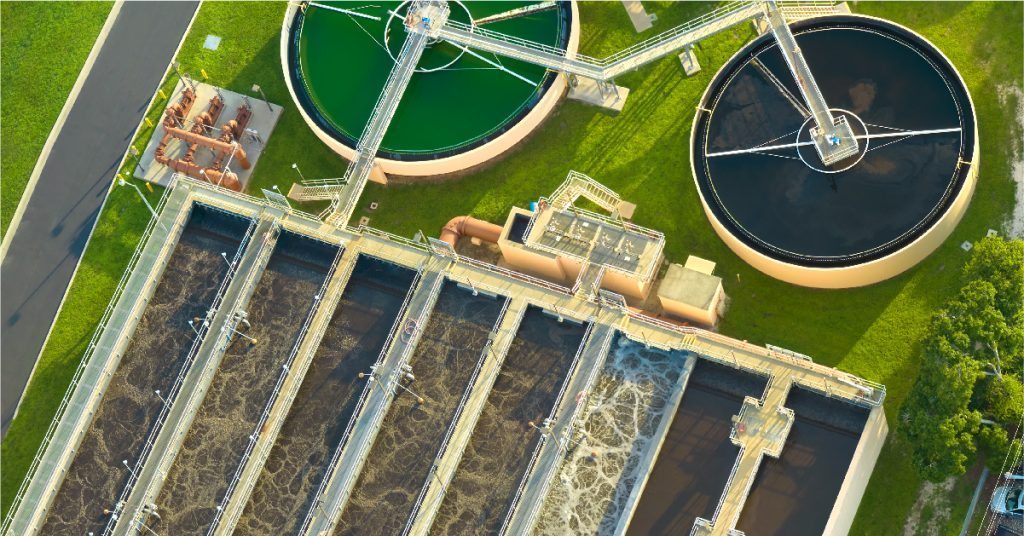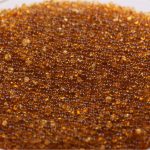Wastewater management is essential to protect human health and the environment. As cities expand and industries grow, the treatment of sewage has become more complex, involving multiple stages of processing. Two of the most fundamental steps are primary and secondary treatment. Understanding the difference between primary and secondary sewage treatment is crucial for recognizing how wastewater is purified before it is safely released or reused.
Table of Contents
ToggleWhat is Primary Sewage Treatment?
Primary sewage treatment is the initial stage of wastewater processing. Its main goal is to remove large, visible, and settleable impurities from sewage. This step focuses on physical processes rather than chemical or biological ones.
Key features of primary treatment include:
- Screening – Large objects like plastic, rags, and debris are removed through screens.
- Grit Removal – Sand, gravel, and other heavy particles settle in grit chambers.
- Sedimentation – Organic and inorganic solids settle at the bottom of sedimentation tanks, forming sludge.
- Skimming – Oils, grease, and lighter materials are skimmed off the surface.
While primary treatment can remove up to 50–60% of suspended solids, it does not significantly reduce dissolved organic matter or harmful microorganisms. Therefore, further treatment is essential.
What is Secondary Sewage Treatment?
Secondary sewage treatment is the next stage, designed to remove dissolved and suspended organic matter that primary treatment cannot handle. This stage relies heavily on biological processes, where microorganisms break down organic pollutants.
Key features of secondary treatment include:
- Aerobic Processes – Activated sludge systems and trickling filters use oxygen and bacteria to decompose organic matter.
- Anaerobic Processes – In oxygen-free environments, microorganisms break down organic waste, often producing biogas as a byproduct.
- Clarification – Remaining solids are settled out after biological treatment, creating clarified effluent ready for discharge or tertiary treatment.
Secondary treatment is highly effective, removing up to 85–95% of organic pollutants and pathogens, making the water much safer for release into the environment.
Difference Between Primary and Secondary Sewage Treatment
The difference between primary and secondary sewage treatment lies in their methods, objectives, and efficiency:
| Aspect | Primary Treatment | Secondary Treatment |
| Process | Physical (screening, sedimentation, skimming) | Biological (microorganisms degrade organic matter) |
| Main Goal | Remove large solids, oils, and debris | Remove dissolved and suspended organic pollutants |
| Pollutant Removal | 50–60% of suspended solids | 85–95% of organic matter and pathogens |
| Technology Used | Screens, grit chambers, sedimentation tanks | Activated sludge process, trickling filters, biofilm reactors |
| Output Quality | Partially clarified water | Significantly purified water, safe for discharge or tertiary treatment |
In short, primary treatment prepares wastewater for further purification, while secondary treatment ensures it is clean enough for safe release or reuse.
Why are both stages necessary?
Relying on only one stage is insufficient. If sewage only undergoes primary treatment, it may still contain harmful pathogens and dissolved organic matter that pollute rivers and groundwater. Similarly, secondary treatment cannot function efficiently without primary treatment first removing larger solids that would clog or damage biological systems.
Together, these processes ensure that wastewater is treated in a safe, efficient, and environmentally responsible manner.
Ion Exchange’s Advanced Sewage Treatment Solutions
Ion Exchange is a leading provider of innovative water and wastewater treatment solutions. Their advanced range of sewage treatment plants is designed to meet the diverse needs of the growing population and industrial sectors. With a focus on sustainability and efficiency, Ion Exchange offers customized solutions that incorporate the latest technologies, ensuring optimal performance and environmental compliance.
INDION New Generation Packaged Sewage Treatment Plant (NGPSTP)
It is a state-of-the-art solution that combines the innovative technologies of lamella plate clarification and aeration, resulting in a highly efficient, ready-to-operate, prefabricated system for sewage treatment. This all-in-one single-tank packaged system is designed with a modular capacity ranging from 10 to 100 m3/d, making it both compact and user-friendly. Not only does it deliver high-quality effluent, but it also boasts features that cater to the specific needs of modern facilities. The NGPSTP’s advantages include minimal land usage, reduced power and chemical requirements, and low operating costs, making it an ideal choice for a wide range of applications while ensuring environmental sustainability and cost-effectiveness.
INDION NGPSTP-NR
It is an advanced sewage treatment solution that combines a fixed film reactor with lamella clarification, resulting in a high-performance, prefabricated system that is ready to operate. This all-in-one, modular design offers compact and simple operation with minimal maintenance. Built with an MS tank lined with FRP, it ensures no corrosion, delivering high-quality effluent while being efficient and easy to manage.
Sequencing Batch Reactor (SBR)
It is an advanced activated sludge process that operates in true batch mode, with both aeration and sludge settlement occurring within the same tank. Unlike conventional continuous-flow systems, which separate these functions into different spaces, the SBR performs them in a time sequence, offering greater flexibility. This design allows the SBR to handle varying influent volumes, making it adaptable to changing conditions, unlike the continuous system, which relies on a fixed flow rate.
Advanced Fluidized Media Reactor (AFMR) system
It is a compact SINGLE TANK DESIGN UNIT that integrates an aeration tank with floating media, a lamella settler, and a chlorine contact tank. The AFMR media boasts a high surface area, excellent physical and chemical resistance, and minimal annual losses. INDION’s Advanced FMR offers significant advantages, including reduced space requirements, lower power consumption due to the elimination of sludge recirculation, and minimal maintenance thanks to its design without moving mechanical parts.
Conclusion
Understanding the difference between primary and secondary sewage treatment highlights how critical both stages are for safeguarding public health and the environment. Primary treatment removes large debris and solids, while secondary treatment focuses on breaking down organic pollutants and pathogens. Combined, they ensure wastewater is transformed from a pollutant into a resource ready for safe discharge or further purification.







